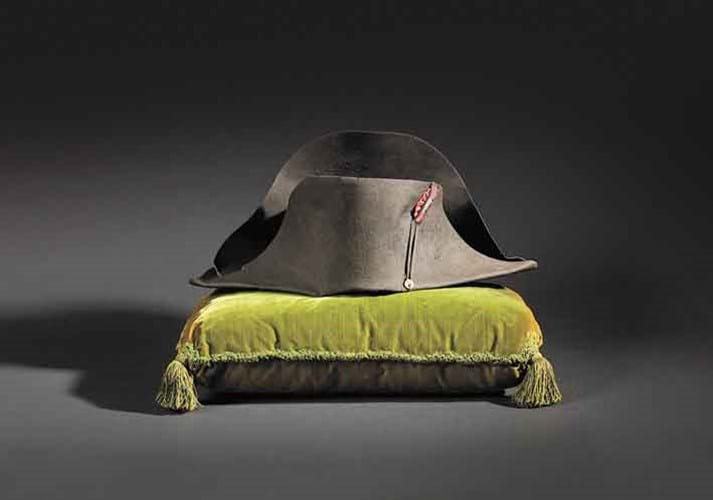
The sale in Fontainebleau, just south of Paris, on November 15 and 16 was the first of a trio of auctions devoted to a dispersal of the Monegasque collection that was assembled largely by Prince Louis II (1870-1949) and turned into a museum by Prince Rainier which the local auction house Osenat offered for sale in conjunction with Binoche et Giquello (24/20% buyer's premium).
The 500-lot sale raised a premium-inclusive total of €10m, but one item captured virtually all the attention and the media coverage. Iconic is a much overused adjective these days, but it can surely be applied to the famous black bicorn hat which the Emperor Napoleon is always shown wearing.
The Emperor's Trademark
He had around 120 of these trademark hats that he wore during the course of the Empire. The Monaco collection boasted one of these retaining the original silk lining, and understandably featured on the sale catalogue cover. It had a provenance to Joseph Giraud, veterinary to the Imperial Household.
The auctioneers had given it an estimate of €300,000-400,000, but that proved far short of the mark on the day as bids came through via the phone, the internet and the room. In the end, as has been widely reported, the black felt hat was secured by a bidder in the saleroom.
Mr T.K. Lee had been sent to Fontainebleau by his company, the South Korean food manufacturing group Harim, to bid for the Napoleonic relic as a trophy and finally secured it after much competition for €1.5m (£1.25m) hammer.
Marble Bust
While that may have been the blockbuster price, the other results testified to the huge global interest in Napoleon and the memorabilia associated with him as well as the lure of this market-fresh, old princely provenance.
Among the other top lots were a 3ft 1in (94cm) high marble bust of Napoleon depicted à l'Antique as a Roman emperor, from the workshop of Antonio Canova, which realised €550,000 (£458,330), and the Sèvres plate pictured in ATG No 2164 which realised a quintuple-estimate €410,000 (£341,670).
This was part of a service used by Napoleon during his exile on St Helena painted with a view of his bivouac on the island of Lobau, which played a key part in his victory over the Austrians at the battle of Wagram during his 1809 Campaign.
More personal mementoes included a shirt that he wore on St Helena which realised €70,000 (£58,330) and a pair of his stockings at €15,000 (£12,500).
As usual, and unsurprisingly given the subject matter, French institutions exercised their right of pre-emption to step in and claim a lot at the market price just as the hammer fell.
Their purchases included a rare example of art by the Empress Josephine, a pencil drawing of a farm at Almogne near Geneva, produced in 1808 under the tutelage of the artist Isabey, which was secured by the Château de Malmaison for €20,000 (£16,670).





